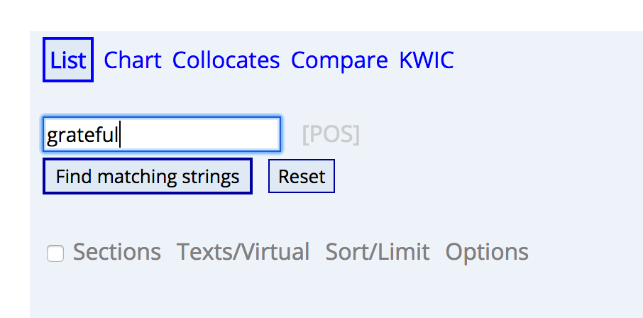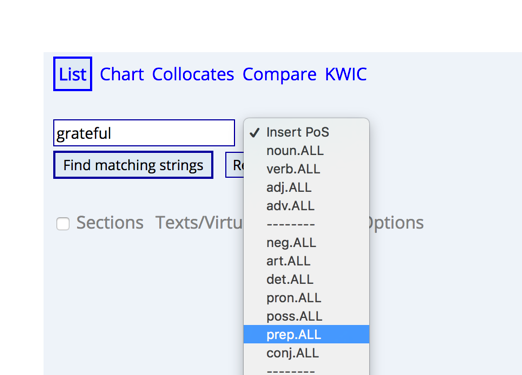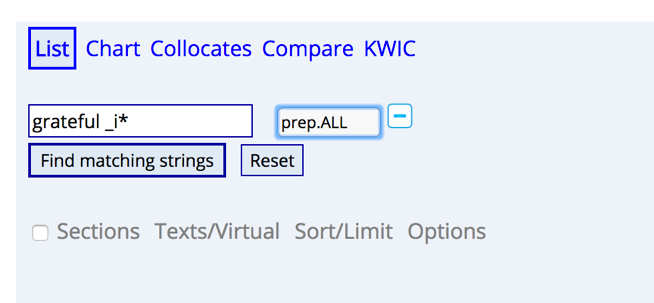|

Even though teachers often provide students with
answers to certain grammar exercises, it does not guarantee that learners will
really remember or understand them. Most of the time, discovery exercises—that
is, when students need to research a topic themselves and report back—turn out
to be more effective than answer keys provided by teachers. This lesson allows
students to examine an online corpus that they can use both in and outside the
classroom in case they doubt the grammatical correctness of their writing.
Because it does not provide direct answers to questions, students have the
opportunity to practice their analytical skills by interpreting the results of
their searches.
|
Levels:
Intermediate+
Aims
- Develop students’ ability to make appropriate
preposition choices in writing.
- Encourage students to analyze language in
use.
- Assist students in discovering answers instead of
providing them with answers.
Class Time: 45
minutes
Preparation Time: 15
minutes (if you want to prepare your own grammar exercise) or none (if you use the Appendix)
Resources Needed:
Computer lab or students’ own laptops, internet access,
handout |
Procedure
-
Divide students in groups or pairs and ask them
to complete a grammar exercise. A sample grammar exercise is provided in the
Appendix.
-
After everyone is done, instead of providing
students with the correct answers in class, encourage them to find the correct
answers themselves.
-
Invite students to visit the Corpus of Contemporary American
English (COCA; Davies, 2008).
-
Familiarize students with the corpus first (if
necessary) by explaining that it is a freely available collection of English
texts which currently totals more than 560 million words. The corpus is
regularly updated and expanded.
-
Walk students through the first question on the worksheet by
inviting them to enter the first target word from the exercise (i.e., grateful) into the search bar (see Figure 1).

Figure 1. COCA search for grateful. (Davies,
2008)
- Ask students to click on the grayed “[POS]”
option, which stands for part of speech, and ask students to select “prep.ALL”,
the tag used for prepositions, as shown in Figure 2.

Figure 2. Part-of-speech drop-down menu in the
COCA. (Davies, 2008)
- Clarify that the system will add a code to the
search bar in order to search for prepositions used immediately after grateful. Students must ensure that there is a space
between grateful and the code (see Figure 3).

Figure 3. COCA search for grateful followed by a preposition. (Davies,
2008)
- Ask students to click on “Find matching strings”
to find out the most commonly used prepositions after grateful (see Figure 4).

Figure 4. COCA results for prepositions after grateful. (Davies, 2008)
- Ask students to click on the results under the
“Context” column (see Figure 4) to investigate the difference between the first
two combinations. Students should notice that grateful for
is used to describe something a person is happy about or thankful for. It is
something a person has received from somebody else, for example, grateful for the time, grateful for their donations, grateful for the
break, etc. The combination grateful to is
mostly used to indicate appreciation to a person who did something for someone
else. For example, grateful to the people, grateful to all of them,
grateful to you, grateful to him, and so
on.
- As a class, choose the option that works best
for the sentence in the exercise. Because the person is happy about
contributions made by their advisor, the correct answer is the collocation grateful for. Students should be able to come to this
conclusion themselves.
- Complete one or two more items from the
worksheet together with the students.
- Ask students to check their answers using the
search results from COCA for every sentence in the exercise (included at the
end of the Appendix).
Options
-
The COCA could be used instead of an answer key
for almost any grammar exercise: use of gerunds (eating, attending,
driving, etc.), subject-verb agreement (she goes, I
go, etc.), verb forms/tenses (went vs. has/have
gone, etc.), and count and noncount nouns (rice vs. a bowl
of rice, water vs. a cup of water, etc.) to cite a few
examples.
-
After students have a chance to work with the
COCA in class, a similar activity could be assigned as homework.
-
Encourage students to create an account on the
COCA website. Even though it is free of charge, it allows no more than 10–15
searches without registration.
Conclusion
Data-driven answers to grammar exercises like this
allow students to become more independent language learners and teach them how
to use a corpus tool to improve their grammatical accuracy.
References
Davies, M. (2008). The corpus of contemporary
American English (COCA). Retrieved December 26, 2021, from https://www.english-corpora.org/coca/
Anastasiia
Kryzhanivska is an ESOL program director
and an English Department assistant teaching professor at Bowling Green State
University, where she teaches ESOL, linguistics, first-year writing, and
teacher education classes. |